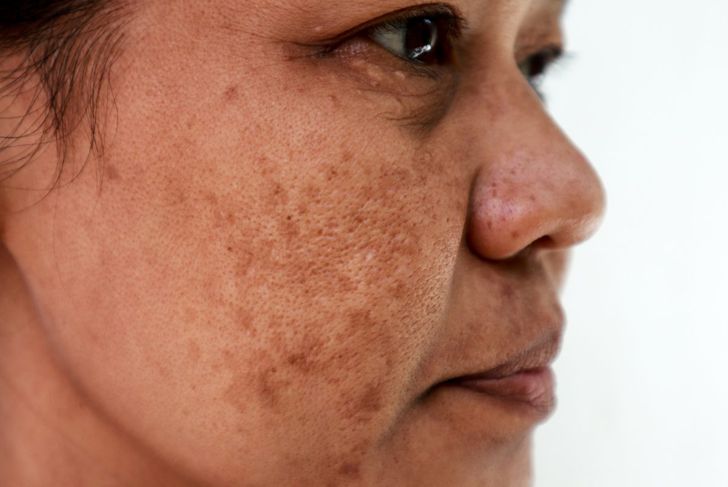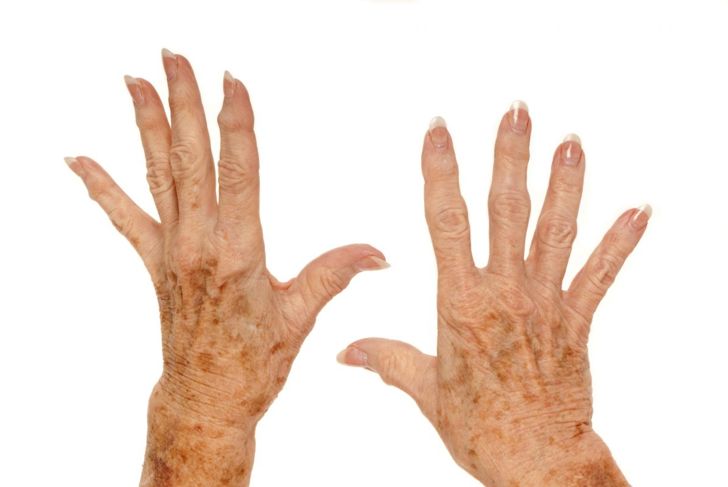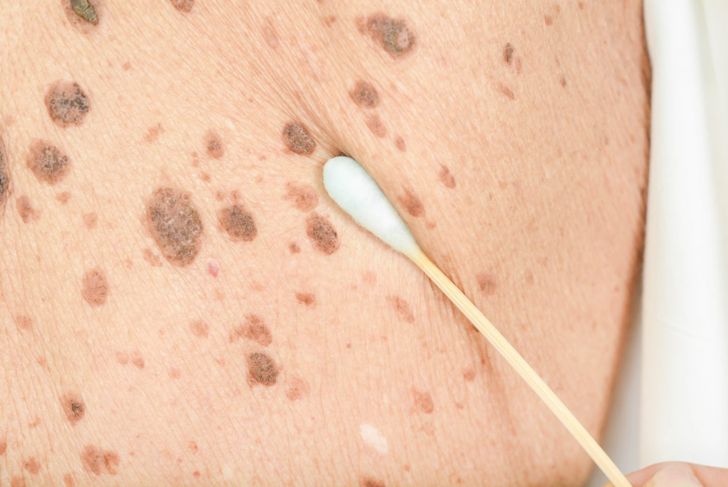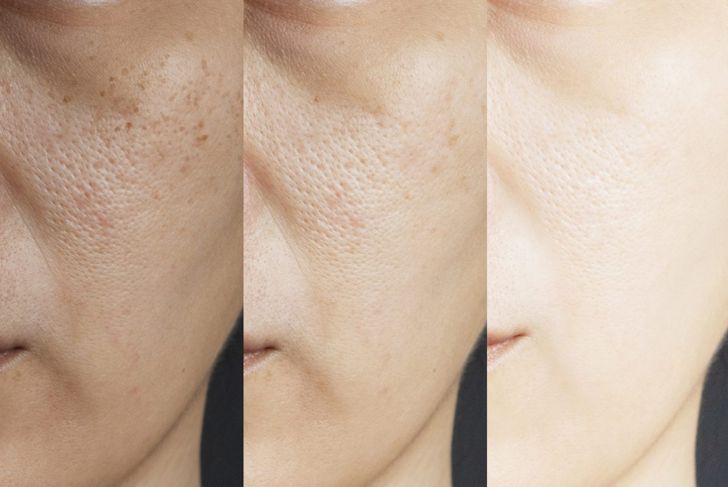Hyperpigmentation is a darkening of the skin or nail tissue that is, on its own, usually harmless. This effect occurs due to an excess of melanin, often from sun exposure. Liver spots (or age spots), moles, freckles, and birthmarks are all examples of hyperpigmentation. For the most part, the condition is not serious or life-threatening, though it does indicate an increased risk of developing skin cancer.
Melanin
Melanin is the natural pigment produced by the skin cells in humans and animals; it gives skin, eyes, and hair their color. The amount and type of melanin a person has depends on their genes. There are two types: eumelanin provides brownish colors, while pheomelanin produces the reddish color that often comes with freckles and red hair. People who are albino are born with extremely low levels of melanin, making their skin and hair appear pale or white. On the other hand, people with very dark skin, such as those of Ethiopian ethnicity, have high melanin levels.
Hyperpigmentation
In addition to affecting skin and hair color, melanin has a protective element that helps block UV radiation by absorbing as much of it and associated free radicals as possible, helping prevent skin cancer. The more UV light melanin absorbs, the darker the skin becomes. However, when the melanin cannot absorb any more, the harmful UV rays begin to damage skin cells, leading to sunburn and skin damage and raising the risk of cancer.
Risk Factors
Hyperpigmentation can affect a person of any ethnicity. People with darker skin tones are more prone to it, and people who receive a lot of sun exposure (either from the sun or tanning beds) are the most likely to have hyperpigmentation. One type of hyperpigmentation, melasma, is more common in women. Otherwise, both men and women are equally likely to develop the condition. The chances of being affected by hyperpigmentation depend upon many factors, including genetics, injury or trauma to the skin, hormones, sun exposure, and certain diseases and drugs.
Genetics — Ephelides (Freckles)
Freckles are a type of hyperpigmentation that occurs in people with lighter skin types, often with blonde or red hair. They also have a genetic component, so a person has a higher chance of developing freckles if their parents or grandparents have them. Freckles are almost always benign (non-cancerous), but their appearance does indicate a higher chance of developing melanoma. Individuals with freckles should always keep an eye out new marks or those that grow in shape or size, which could indicate malignancy.
Injury or Trauma — Post-Inflammatory
After injury or trauma to layers of skin, some people develop dark spots whent he body releases extra melanin to speed healing. Post-inflammatory hyperpigmentation might appear after a burn, deep cystic acne, dermatitis, lupus infection, allergic reactions, or eczema. The spots are usually temporary, fading over the following months or years without treatment. Post-inflammatory hyperpigmentation is more pronounced in those with darker skin types, such as those with African American, Asian, Native American, Hispanic, or Middle Eastern ethnicity.
Hormones — Melasma
Melasmas are darkened brown patches that usually occur on the cheeks and forehead. The cause is a combination of sunlight exposure and increasing levels of the hormones estrogen and progesterone. The most frequently affected demographic is women with darker skin who take birth control or are pregnant. The patches may fade during winter and return in the spring. They generally disappear after pregnancy or when the woman stops taking birth control. People with Addison’s disease can also develop melasma hyperpigmentation because the condition prevents the production of certain hormones.
Sun Exposure — Lentigines
Generally known as liver spots or age spots, lentigines are among the most common forms of hyperpigmentation. They resemble large freckles and are flat, dark, and irregularly shaped. Because they are usually caused by UV damage, lentigines are often found on the hands, face, and other parts of the body that see frequent sun exposure. Age spots continue to get darker or more pronounced when exposed to more sun and as an individual ages. The spots are usually benign but do carry the possibility of developing into melanoma.
Certain Drugs Cause Hyperpigmentation
When the hyperpigmentation is widespread throughout the body, it is generally caused by drug treatment or exposure to a chemical. Antimalarials, antibiotics, cancer chemotherapy drugs, and tricyclic antidepressants can all result in skin discoloration, as can too much iron in the blood and exposure to silver, gold, or mercury. Some individuals experience recurring drug reactions — every time they take a certain drug, they have a localized reaction that, over time, develops into hyperpigmentation. Most drug-induced hyperpigmentation will fade once the person stops taking the drug, but some is permanent.
Diagnosis
A doctor must first identify the root cause of the hyperpigmentation — whether it is caused by increased melanin production, an increase in the number of cells that produce melanin, or the effect of some other substance on the skin. A physical examination and full history will help the physician determine when the discoloration first appeared and pinpoint any potential links to medications, sun exposure, or reactants. Often, the diagnosis from physical examination is possible, but sometimes a biopsy is required to identify the cause of hyperpigmentation. Some doctors may also use a special light called a Wood’s lamp, which allows them to see through the layers of skin and identify where the pigmentation starts.
Treatment and Prevention
Hyperpigmentation does not require treatment unless a person desires it for cosmetic or psychosocial reasons. People who want to diminish the visibility of their hyperpigmentation often try chemical peels, laser treatments, intense pulsed light, and cryotherapy. To avoid hyperpigmentation, or to prevent it from getting worse, doctors recommend limiting sun exposure by wearing hats and protective clothing, and most importantly, wearing a high-SPF sunscreen. Regardless of personal feelings or preventative care, it is important to monitor any skin discoloration for changes that could indicate a larger issue.

 Home
Home Health
Health Diet & Nutrition
Diet & Nutrition Living Well
Living Well More
More




















